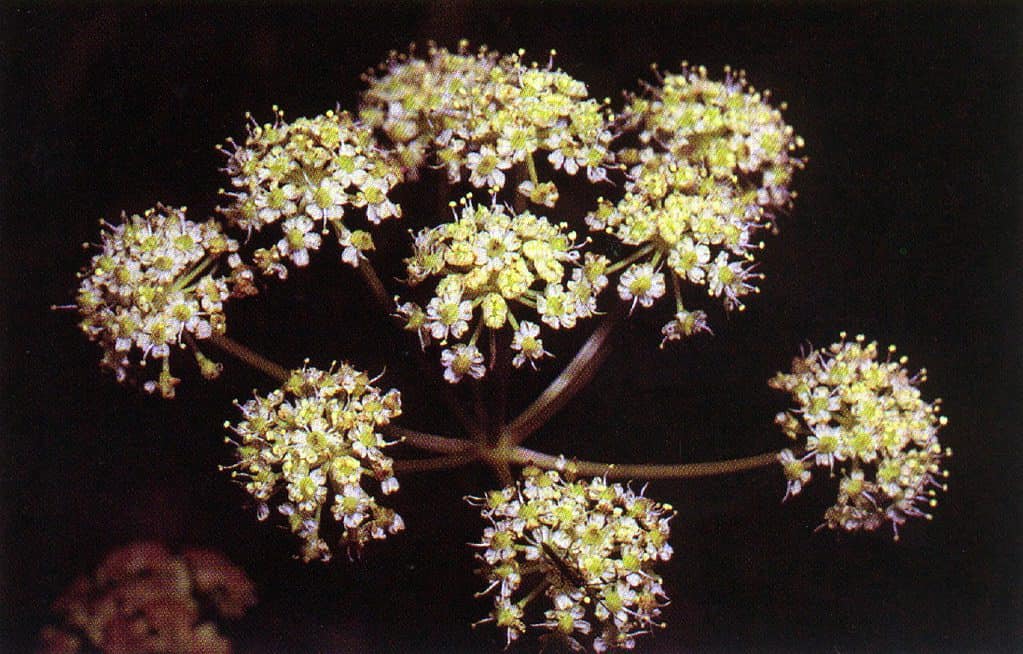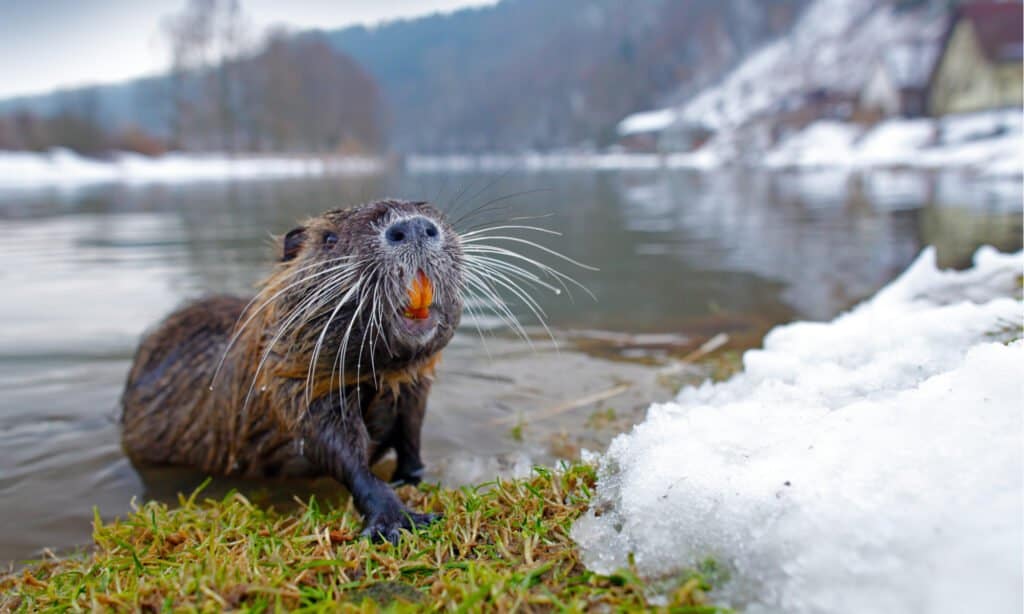The Skagit River is a river that flows through Southern British Columbia, Canada into Northern Washington. The river stretches 150 miles through the Cascade Mountains to drain into Puget Sound. The Skagit River has three main tributaries in Washington – the Sauk, Cascade, and Suiattle Rivers. In British Columbia, it has three more – Snass Creek, the Sumallo River, and the Klesilkwa River. We’re going to take a look at what’s below the surface of the Skagit, and whether the waters are safe to swim in or not.
About the Skagit River

The Skagit River is a river that flows through Southern British Columbia, Canada into Northern Washington.
©NayaDadara/Shutterstock.com
The Skagit River’s starting point is Allison Pass. Allison Pass is a pass in the Canadian Cascade Mountains. This pass is located in EC Manning Provincial Park along Crowsnest Highway (Highway 3). From Allison Pass, it flows northwest for a while before descending into the United States and continuing west to the Sound. The river reaches a maximum depth of 83 feet near Newhalem, Washington.
The Skagit River is a part of the National Wild and Scenic Rivers System, which is a program that preserves the natural and free flow of precious river systems. This program began in the 1960s and now contains an expansive network of pristine rivers across the country. The Skagit River is just one of many protected rivers in this system. It is one of the first rivers in Washington to join the system. To date, over 200 rivers in the nation are a part of this protection program. This progress toward conservation and preservation was a huge leap for the United States in the 60s and the work continues today.
The Skagit River achieved designation in the river system in 1978. Now, 100 miles of the river have scenic designations while another 58 miles have recreational designations.
The Skagit River is the largest river in Puget Sound and one of the largest in the state. The hydroelectric dams on the river are responsible for generating a large portion of Seattle’s electricity. Right below the dams, the river becomes a part of the National Wild and Scenic Rivers System. The system begins below the dams because rivers in the system must be free-flowing.
Is There Pollution in the Skagit River?
The Skagit County Public Works team is responsible for monitoring the quality of the water in Skagit County, including the Skagit River. This public works department has a Skagit River Water Monitoring Program that publishes a yearly report on the overall quality of the surface water in the county and on the Skagit River. This yearly report extensively reviews water quality findings from several sites along the Skagit. 2021 marked the 18th year of water quality monitoring through this program. Researchers take samples bi-weekly from each of the sample sites along the river.
With this information, we can tell you that there is pollution in the Skagit River. Pollution impacts almost every body of water in the world. This means the question is not, “Is the river polluted?”, but “How polluted is the river?”. How polluted is the Skagit River, then? While we cannot give an in-depth answer, we can provide a baseline. There are several sites along the Skagit River that do not meet the state of Washington’s overall water quality standards. The good news is that water at several sites has been improving in quality with the hard work and diligence of several different organizations and programs. The 2021 report shows positive trends in water quality across most testing sites in Skagit County.
Are There Dangerous Animals in the Skagit River?

Be sure to know what to do in case of a wolf sighting.
©AB Photographie/Shutterstock.com
There are very few dangerous animals in and around the Skagit River. Rattlesnakes do live in Washington, but you won’t commonly spot them as far north as the Skagit. Most snakes in the area are harmless, including the common garter snake. Similarly, the black widow spider does live in the state, but usually not as far west as the Skagit.
The endangered gray wolf does live in the area, though sightings are rare.
Overall, the waters and surrounding areas of the Skagit River are relatively free of dangerous or poisonous animals. You’ll still want to make sure you keep a safe distance from any animals you do see. There may be cougars or porcupines living near the waters of the Skagit, and black bears are also endemic to the Cascade range. Always be aware of your surroundings when you’re exploring in nature.
Poisonous Plants Near the Skagit River

The western water hemlock is the most poisonous plant on the North American continent.
©Robert H. Mohlenbrock / Public Domain – License
A few poisonous and toxic plants do grow in the Cascades, along with alongside the banks of the Skagit River. Poison ivy, poison oak, and poison sumac all grow in the area, but a new invader has made itself present. Poison hemlock is a deadly and invasive plant that is spreading across the country rapidly. It has made its way to Washington, Skagit County, and the banks of the Skagit River.
Poison hemlock is a Class B noxious weed, which means that it is a non-native plant that requires control in order to stop its spread and prevent new occurrences of its existence. This plant is dangerous to humans, livestock, and pets. It is a toxic member of the carrot family and it mostly impacts living creatures after ingesting it. However, the plant is toxic all the way through, and some people and animals might have allergic or toxic reactions just from touching it.
Keep an eye on your surroundings as you hike, swim, or fish along the Skagit River to ensure you are not touching or transporting any poisonous plants.
Is the Skagit River Safe to Swim in?

Swimming is a popular summer pastime for many people in the United States, especially in areas rich with freshwater lakes and rivers.
©l i g h t p o e t/Shutterstock.com
Now that we’ve gone over potential risks, we come to our conclusion. Yes, the Skagit River is safe to swim in. In fact, it is a popular destination for swimmers, boaters, and white-water rafters. The river is rated as class 2-3 for rafting, which means it’s a great spot for introductory and intermediate rafting experiences. Fishing is also a common and popular pastime along the river.
A variety of freshwater beaches line the shores of the river, including the ones at Howard Miller Steelhead Park and Rasar State Park.
Other recreation includes float tours, boat tours, fishing tours, hiking, wildlife viewing, picnicking, and bird watching. Hikers in the Cascades will catch a glimpse of the Skagit River from many viewpoints on several of the wonderful trails in the area, or even stop down by its shores for a dip in its waters.
Animals in the Skagit River

Nutrias are an introduced species near the Skagit River.
©Ondrej Prosicky/Shutterstock.com
Finally, we’ll take a moment to talk about animals in and around the river. We mentioned the kinds of animals that DON’T live in Skagit River, and now we’ll cover a few that do. The Skagit River is the only river in Washington that contains all 5 species of Pacific salmon – Chinook, chum, coho, pink, and sockeye. Additionally, this river has the largest concentration of bull trout known to the state. There are plenty of other fish that swim in the river, including golden trout, mountain whitefish, and Northern pikeminnows.
Fish aren’t the only animals that make the water their home. Painted turtles, Northern alligator lizards, and rubber boas also inhabit the area. As for mammals, shrews, opossums, and moles are all common in the area. There are 9 different bat species living in the Skagit River Basin area alone, and several varieties of weasel.
Larger mammals include porcupines, black bears, coyotes, gray wolves, nutrias, mountain lions, mountain goats, and moose.
The photo featured at the top of this post is © NayaDadara/Shutterstock.com
Thank you for reading! Have some feedback for us? Contact the AZ Animals editorial team.






